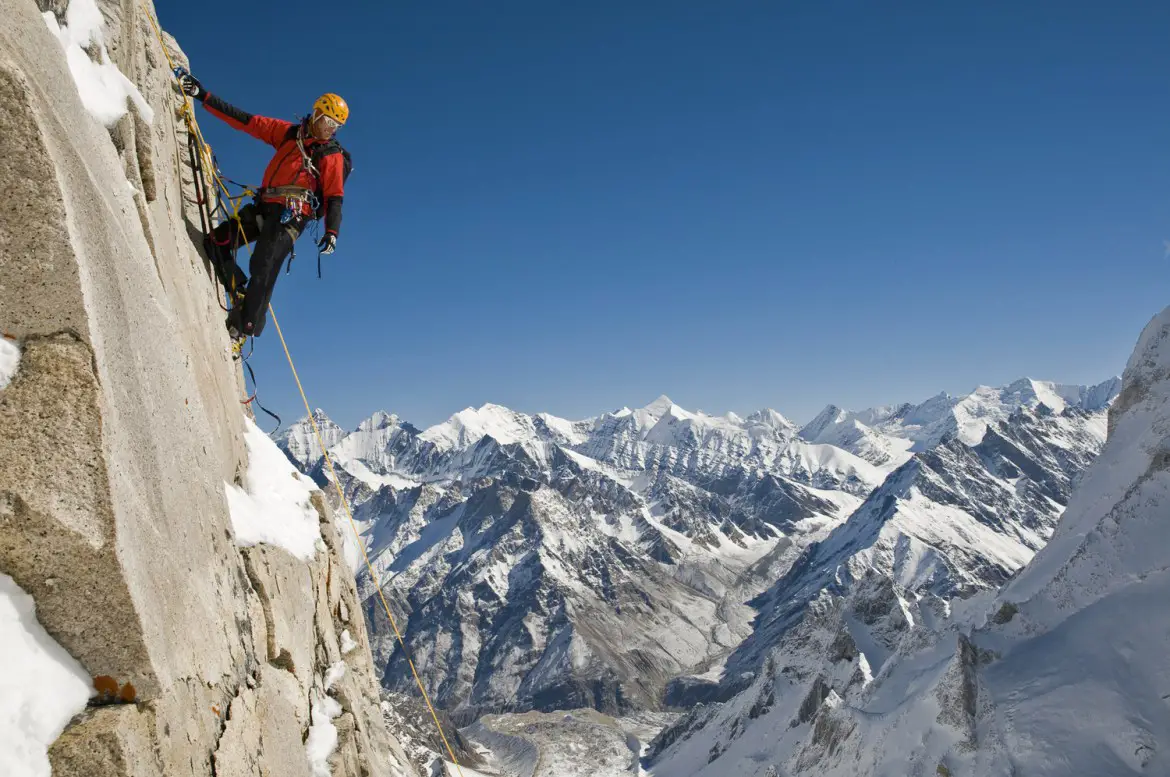Climbing isn’t for everyone.
I’d like to believe differently — I’d love to make all of my friends into climbing partners — but it is, decidedly, one of those activities that some people love and some people will never love.
Climbing movies, however, can be for everyone. Whether they are authentic documentaries or pure fiction, many climbing films share numerous positive movie qualities: thrilling life-or-death action, dramatic stories and stunning landscapes.
Right now, many fans of climbing or of climbing movies are eagerly awaiting the upcoming film, “Free Solo,” which, if the trailer and reviews are anything to go by, will quite possibly knock the socks — or climbing shoes — off many existing films. Maybe this is just my climber identification and passion for anything that has to do with the outdoors and outdoor-media talking, but I’m pretty excited to watch the feature-length documentation of Alex Honnold’s legendary rope-less enterprise on El Capitan.
In the meantime, there are many other classic climbing features to use as the ultimate inspiration or as something to feast your eyes upon that isn’t homework. A mix of Hollywood and documentary creations, there ought to be at least one film here that either is fun to watch or that inspires you to finally face whatever towering mountains may stand in your life or in your head.
1. “Meru”
“Meru” is a 2015 documentary film following the first ascent of Meru, one of the most technical peaks in the Himalayas. After failing to summit in 2008 under unfortunate weather conditions, Conrad Anker, Jimmy Chin and Renan Ozturk are planning a second attempt nearly three years later when life goes haywire.
Ozturk suffers a near-fatal accident skiing; just days later, Chin survives being buried by avalanche in the same location. Meanwhile, Anker is forced to deal with difficult choices due to his commitment to always coming back home alive to his family.
People frequently ask climbers questions along the lines of, “Why do you climb?” The classic response is to quote George Mallory (renowned British climber who disappeared on Everest years in the 1920s) and reply simply, “Because it’s there.” Instead of approaching the elemental question with a simple voice-over spewing nothing but platitudes, “Meru” dives deep into the reasons these phenomenal climbers willingly risk their lives in pursuit of elusive summits. The film doesn’t exactly answer why — perhaps nothing can — but offers rare insight into the philosophical enigma.
Although the climbing feats are certainly incredible, the quality of footage collected by Chin and Ozturk during the expedition itself truly suspends belief.
The film can be found on Netflix.
2. “Touching the Void”
After successfully achieving an ambitious first ascent of the west face of Siula Grande, Simon Yates and Joe Simpson are descending when Simpson falls and breaks his leg. The two are continuing their painstaking progress down to safety when Simpson falls into a crevasse. Yates is forced to accept that Simpson is dead, cut the rope and continue his descent. Against all odds, Simpson survives. “Touching the Void” tells the astonishing story of his journey to safety.
https://www.youtube.com/watch?v=G4LD9vQ3Fjs
Based on Simpson’s popular 1988 book of the same name, “Touching the Void” re-creates this legendary story of two climbers and their perilous journey in the Peruvian Andes with remarkable authenticity. It might sound like nightmare material for some, but the docudrama is well worth your time if you’re interested in survival stories.
An unbelievable tale of disaster, trial and friendship in the remote Andean mountains, what more could you possibly ask for as a reminder that perhaps your current struggle could always be a little bit worse?
3. “The Wildest Dream”
Two British climbers, George Mallory and Andrew Irvine, vanished on Mount Everest in 1924. Anker discovered Mallory’s body on Everest in 1999. To this day, no one knows if Mallow summited Everest before he died — and his body, which was well-preserved in ice, was not holding the photo of his wife that he had promised to leave on the summit.
“The Wildest Dream” follows two major stories: Mallory’s fatal climb, narrated through letters read by Ralph Fiennes and Natasha Richardson as Mallory and his wife, and illustrated through actual film footage and real photos from the early expedition and Anker’s return to Everest to explore Mallory’s story several years after finding Mallory’s body.
The purpose of this second journey was essentially to prove that Mallory could have climbed Everest with the gear and knowledge of his era and was, in fact, the first man (or one of the first men if his partner had also summited) to touch the top of the world.
Anker and Leo Houlding attempt to replicate Mallory’s challenge by attempting to climb the dangerous “second step” on the North Ridge without the ladder that has been used since the 1980s and wearing clothing and footwear like Mallory, among many other aspects.
Ultimately, the film proves nothing — except that all of the mountaineers in the film are incredibly dedicated and talented, and that the theatrical combination of history and adventure produces an appealing and touching story of life and death on Mount Everest.
4. “Into Thin Air: Death on Everest”
Based on Jon Krakauer’s bestselling book of the same title, “Into Thin Air” does a commendable job of realistically recreating the disastrous events that occurred on Mount Everest, May 10, 1996, for two teams led by Scott Fischer and Rob Hall who were first vying for the summit, and then for their lives.
However, it’s worth nothing that although Krakauer was involved in the film, he has also criticized the adaption as “total bull” and clearly instructs you to read the book if you’re interested in facts. That seems fair enough instruction, but whether it is a fictional or nonfictional account, the film has everything for the armchair alpinist — action-packed adventure, engaging biography and plenty of disaster drama.
There are other, perhaps less dramatized, documentaries and media representations covering the 1996 Everest disaster, including the 1998 Everest IMAX film, which is recognized as one of the best IMAX climbing films ever made and definitely worth the watch, if you can find it.

















